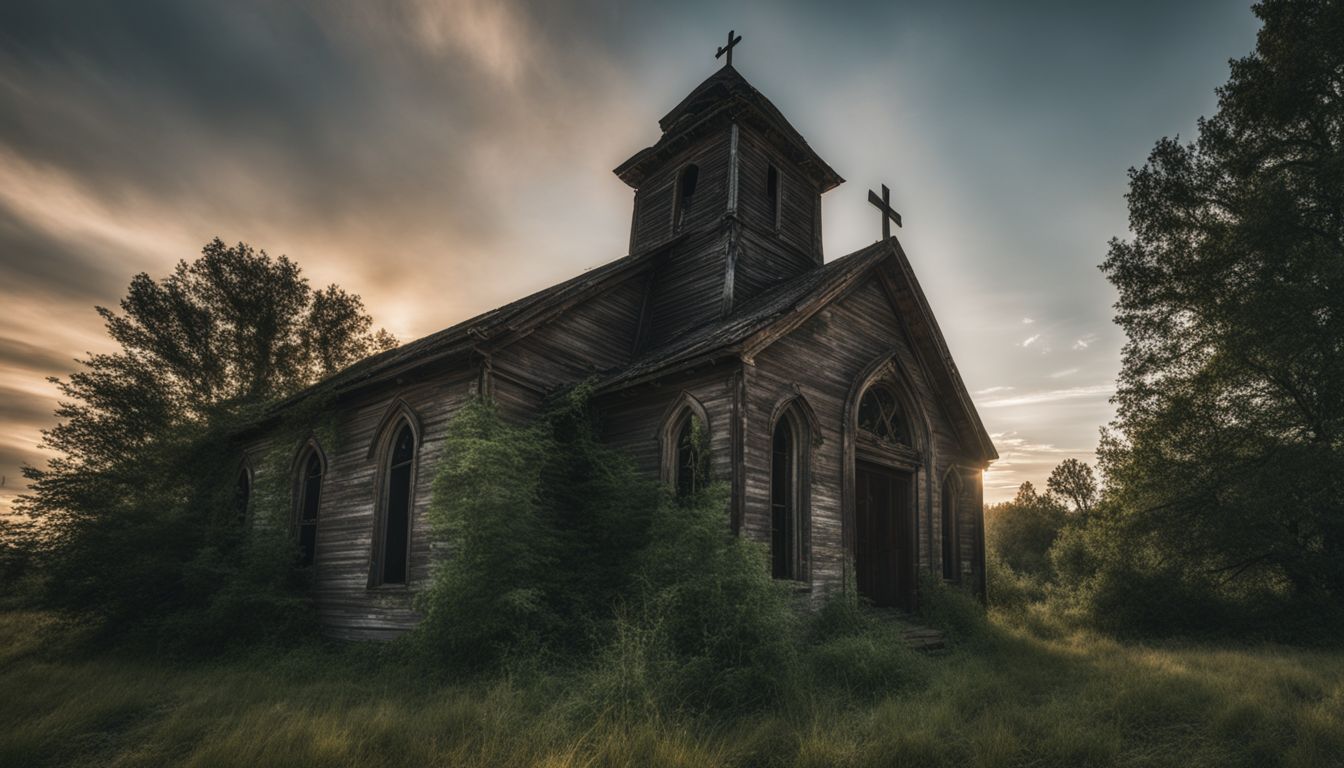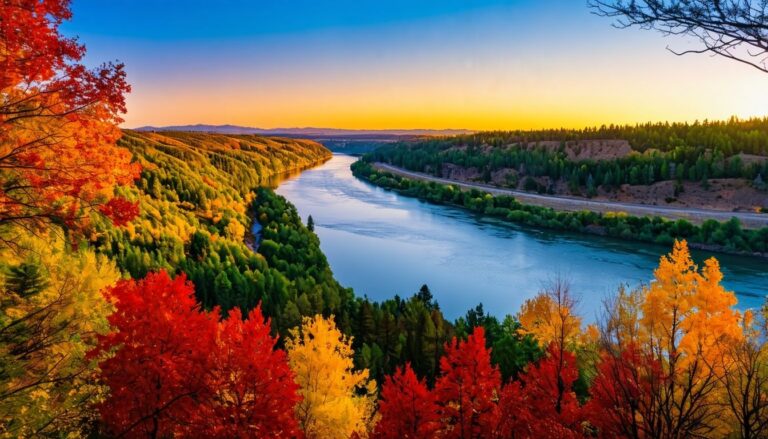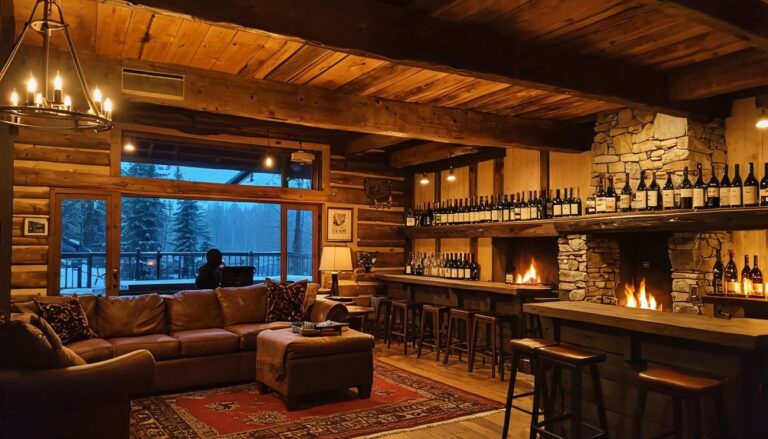Exploring The Enigmatic Oregon Ghost Towns: A Historical Journey Through Abandoned Settlements
Oregon Ghost Towns
Looking for a unique adventure that takes you off the beaten path? We totally get it—it can be tough to find something truly different. Good news: Oregon, home to the highest number of ghost towns in America at 200, offers an intriguing option for those willing to explore.
This guide will walk you through these forgotten settlements, offering tips and highlighting must-see spots along the way. Prepare yourself for an unforgettable journey into history!
Key Takeaways
- Oregon is home to 200 ghost towns, offering a unique glimpse into America’s past and making it the state with the highest number of abandoned settlements.
- The demise of Oregon’s ghost towns can be traced back to industries like gold mining dwindling, natural disasters, or changes in transportation routes that led communities to move in search of better opportunities.
- Visiting places like Shaniko and Sumpter allows travelers to connect directly with Oregon’s history, from thriving wool trade hubs to booming gold panning sites.
- Ghost towns like Bourne reflect on a bygone era, serving as reminders of both the prosperity and hardship faced by pioneering communities.
- Proper planning and respect for the environment and history are crucial when exploring these remnants of past societies, ensuring their preservation for future generations.
The History and Appeal of Oregon Ghost Towns

Oregon’s ghost towns hold a compelling historical allure, attracting visitors with their intriguing stories of prosperity and abandonment. The reasons behind their deserted state often stem from the decline of industries like mining or timber extraction, contributing to their cultural and historical significance within the Pacific Northwest region.
These remnants offer a fascinating glimpse into Oregon’s past, showcasing how these once-thriving communities have evolved over time.
Reasons for their abandonment
Many of Oregon’s ghost towns sprang up during the Gold Rush in the 19th century. They grew quickly as people flocked to them, hoping to find their fortunes in gold mining. These settlements often had everything from mining camps to post offices, bustling with life and activity.
But as the gold became harder to find, people started leaving these towns. The once-busy streets and buildings fell silent as communities moved on in search of better opportunities elsewhere.
Some towns faced other challenges that led to their abandonment. Natural disasters like floods or fires destroyed vital parts of some settlements, making it impossible for residents to rebuild.
Others lost their importance when changes in technology or transportation routes occurred, such as new railroads being built that bypassed them entirely. As a result, shops closed down, and services like post offices shut their doors, leaving these towns frozen in time but without inhabitants.
Cultural and historical significance
Oregon’s ghost towns hold a mirror to the past, offering insights into the lives led during times of booming industries and subsequent decline. These abandoned settlements emerged around resources like gold mines or along major trade routes such as the Columbia River.
As we stroll through these deserted streets, we touch ground where pioneers once stood, engaging directly with Oregon’s rich history.
Exploring these sites connects us with stories of hope, hardship, and resilience. For instance, places like Shaniko thrived on wool trade before railroads shifted commerce patterns.
Sumpter bloomed with gold panning then faded as veins ran dry. Each ghost town narrates a unique tale from Oregon’s development tapestry, inviting us to appreciate the complex journey from bustling community hubs to serene historic markers left for our discovery.
Must-Visit Ghost Towns in Oregon

When planning your trip to explore Oregon’s ghost towns, it’s essential to include these must-visit locations on your itinerary. These hidden gems showcase the rich history and captivating stories of Oregon’s past, offering a unique glimpse into the state’s cultural heritage.
Each town holds its own fascinating tales waiting to be discovered by curious travelers.
Shaniko
We visited Shaniko, a town in Northern Oregon that once buzzed with activity in the late 19th and early 20th centuries. This ghost town gave us a rare glimpse into the past with its preserved buildings and quiet streets.
It felt like stepping back in time, walking through an old movie set where the echoes of history still linger.
In our trip to Shaniko, we discovered it’s not just an empty place. The town holds stories of days when it was a thriving community. Exploring this area offers unique insights into Oregon’s heritage and the dramatic shifts that towns can undergo over time.
It’s a powerful reminder of how places evolve and what gets left behind.
Sumpter
Sumpter, nestled in Eastern Oregon, is a must-visit ghost town with a rich history and unique attractions. Visitors can legally pan for gold here, immersing themselves in the town’s gold rush heritage.
The Sumpter Valley Dredge State Heritage Area offers insight into the area’s mining legacy, while the historic downtown presents well-preserved buildings that evoke the spirit of bygone eras.
Fort Stevens
Fort Stevens, an abandoned town in Oregon, beckons with its historical allure. Once a thriving community during economic booms, Fort Stevens is now inhabited by 30 people or less. Exploring this ghost town demands reliable transportation, emergency communication preparedness, and utmost respect for the location’s history and environment.
With proper planning and understanding of its significance, visitors can immerse themselves in the fascinating narrative of Fort Stevens’ past.
Ritter
Ritter is an eastern Oregon ghost town that was once a bustling place during the gold rush era. Today, it is home to less than 30 people but offers a fascinating glimpse into the past, preserving a time gone by.
The town serves as a reminder of its former glory and holds historical significance for those seeking to explore quieter and smaller towns in the region.
Bourne
Bourne, an Oregon ghost town, sits as a poignant reminder of the state’s rich history. Abandoned in the late 19th and early 20th centuries, Bourne bears witness to bygone days when it was bustling with life.
Known for its pivotal role in Oregon’s past, this enigmatic settlement invites exploration to uncover its secrets and grasp a deeper understanding of the region’s heritage. Rich with historical significance, Bourne offers an immersive experience that sheds light on bygone eras and reflects society’s evolution over time.
Tips for Exploring Oregon Ghost Towns
When exploring Oregon ghost towns, it’s essential to prepare adequately and consider safety measures. Always respect the environment and history of these abandoned settlements to ensure their preservation for future generations.
Seek information about specific ghost towns before setting out on your journey, ensuring a well-informed and enjoyable experience.
Proper preparation and safety measures
Before setting off to explore Oregon’s ghost towns, it’s crucial to prepare adequately and prioritize safety. When embarking on this adventure, having reliable transportation and essential emergency supplies like a satellite phone and large battery for devices is imperative.
It’s also important to respect the environment and historical sites by refraining from trespassing on private property without permission. Furthermore, being attentive to local advice will enhance the overall experience while exploring these historically rich areas.
In addition, visitors should be mindful of their understanding towards the history and significance of each location. Our firsthand experience has taught us that approaching with reverence can unlock hidden secrets of these enigmatic places.
Respect for the environment and history
When exploring Oregon’s ghost towns, it’s crucial to maintain respect for the environment and history. Preserving these abandoned settlements is a key aspect of enjoying their historical charm.
Adhering to local guidelines, staying on designated paths, and refraining from disturbing or removing any artifacts are essential in preserving the integrity of these sites. Being mindful of the impact our visit has on the surroundings helps maintain the balance between exploration and preservation.
Visitors should also take into consideration the historical significance of these towns. Recognizing their role in shaping Oregon’s past enhances the experience and fosters a deeper appreciation for the cultural heritage they represent.
How to find information about specific towns
To uncover information about specific towns, turn to reliable sources like historical archives, local libraries, and town museums. These sources often hold valuable records, photos, and artifacts that provide insights into the town’s past.
Additionally, reaching out to local historical societies or engaging with longtime residents can yield firsthand stories and anecdotes brimming with historical tidbits. Websites for state tourism boards and local visitor bureaus also serve as handy resources for discovering interesting facts about these quieter towns waiting to be explored.
By piecing together these different sources of information, one can gain a deeper understanding of the unique history and allure of each small town in Oregon.
The Ghost Town Experience – What to Expect
Exploring Oregon’s ghost towns promises unexpected discoveries and a dive into the past. Visitors will feel nostalgia, imagining life in these abandoned settlements that reflect society’s evolution.
Stumbling upon unexpected discoveries
While exploring Oregon’s ghost towns, we stumbled upon unexpected discoveries that enthralled us. Among the dilapidated buildings and remnants of the past, we found intriguing artifacts and remnants of daily life from a bygone era.
These hidden gems evoke a sense of wonder and curiosity, offering an intimate glimpse into the lives of those who once populated these now deserted towns. The joy in stumbling upon such forgotten treasures adds an element of surprise and excitement to our exploration, making each visit a truly memorable experience.
The unexpected discoveries we encountered while delving into Oregon’s ghost towns highlight the captivating allure of these historical sites. Uncovering relics lost to time gives us a profound connection to history and enriches our understanding of the people who once called these places home.
Imagining the past
As we explore the Oregon ghost towns, our minds wander back to a time when these settlements were bustling with life. Imagine the clatter of horse-drawn carriages on cobbled streets and the echoes of lively conversations in now-abandoned buildings.
It’s like stepping into a living history book, gaining insight into what life was like during the Gold Rush and other significant eras that shaped these towns. As we walk through empty streets, we can’t help but envision the lives led here – envisioning simpler times before modernity took over.
The bittersweet feeling of nostalgia
Exploring ghost towns can stir up a bittersweet feeling of nostalgia as we wander through deserted streets and gaze upon abandoned buildings. The quietness and emptiness evoke a sense of longing for the past, reminding us of bygone days when these towns were vibrant communities.
It’s remarkable to ponder the lives led by those who once inhabited these now desolate places – their daily routines, hopes, dreams, and challenges. Amidst this sentimentality, there’s an undeniable allure in witnessing time-frozen remnants that tug at our heartstrings while igniting our curiosity about what once was.
The uniqueness of exploring ghost towns lies in the juxtaposition between melancholy and fascination with history – an experience that allows us to step back in time without leaving the present day behind.
How ghost towns reflect the evolution of society
Ghost towns offer a unique window into the past, showing how communities thrived and faded in response to economic shifts. These abandoned settlements stand as tangible reminders of the ever-changing nature of society, reflecting times when industries boomed and busted.
By exploring these once-bustling towns, we gain insight into how past societies adapted to challenges, revealing the resilience and creativity that have shaped our modern world. The evolution of ghost towns tells a story of human endeavor, highlighting how people responded to changing circumstances and illustrating the enduring human spirit across generations.
Check out all of the Best Small Towns in the West!
- Best Small Towns in Alaska
- Best Small Towns in Arizona
- Best Small Towns in California
- Best Small Towns in Colorado
- Best Small Towns in Hawaii
- Best Small Towns in Idaho
- Best Small Towns in Montana
- Best Small Towns in New Mexico
- Best Small Towns in Nevada
- Best Small Towns in Oregon
- Best Small Towns in Utah
- Best Small Towns in Wyoming
- Best Small Towns in Washington
Oregon Ghost Towns Conclusion
As we conclude our historical exploration of Oregon’s ghost towns, it’s clear that these abandoned settlements hold a captivating allure. The remnants of the bygone eras and the quiet whispers of history reverberate through these enigmatic places, offering visitors a unique glimpse into the past.
From the gold rush legacy to the stories etched within their dilapidated structures, these ghost towns stand as poignant testaments to Oregon’s rich and diverse history. As you embark on your journey to discover these hidden gems, remember to tread respectfully and absorb the palpable sense of nostalgia that lingers in each town.
Intriguingly, unraveling the mysteries shrouding Oregon’s ghost towns not only offers an educational experience but also provides insight into how society has evolved over time. It’s an expedition into a forgotten realm where every creaking floorboard and weathered building holds untold tales waiting to be discovered – making it a truly enthralling adventure for all who venture there.
So pack your bags, plan your route meticulously, and get ready for an unforgettable odyssey through Oregon’s hauntingly beautiful ghost towns!
Oregon Ghost Towns FAQs
1. What are Oregon ghost towns?
Oregon ghost towns are abandoned settlements scattered across the state, from the Oregon coast to central Oregon. These include old gold mining camps and communities left behind after changes in economy or disasters.
2. Why did people leave these towns?
People left these towns for various reasons, including the decline of gold mining, changes during World War II, and shifts in local economies that made living in these areas unsustainable.
3. Can you visit ghost towns in Oregon?
Yes, many of Oregon’s ghost towns like Greenhorn, Rajneeshpuram, and Bridal Veil can be visited. They offer a glimpse into the state’s rich history and adventurous past.
4. What is special about Rajneeshpuram?
Rajneeshpuram holds a unique place in Oregon history as a controversial city founded by followers of Bhagwan Shree Rajneesh in the 1980s on Big Muddy Ranch near Antelope, showcasing an unusual chapter of communal living.
5. Are there any books about these ghost towns?
Yes, publications like those from Caxton Press provide detailed histories and stories about these abandoned places, offering more insights into their past lives and significance to Oregon’s heritage.
6. What can I learn from visiting an Oregon ghost town?
Visiting an Oregon ghost town allows you to step back in time and explore the remnants of once-thriving communities. It offers educational insights into historical events that shaped the region and tales of resilience amidst changing times.







